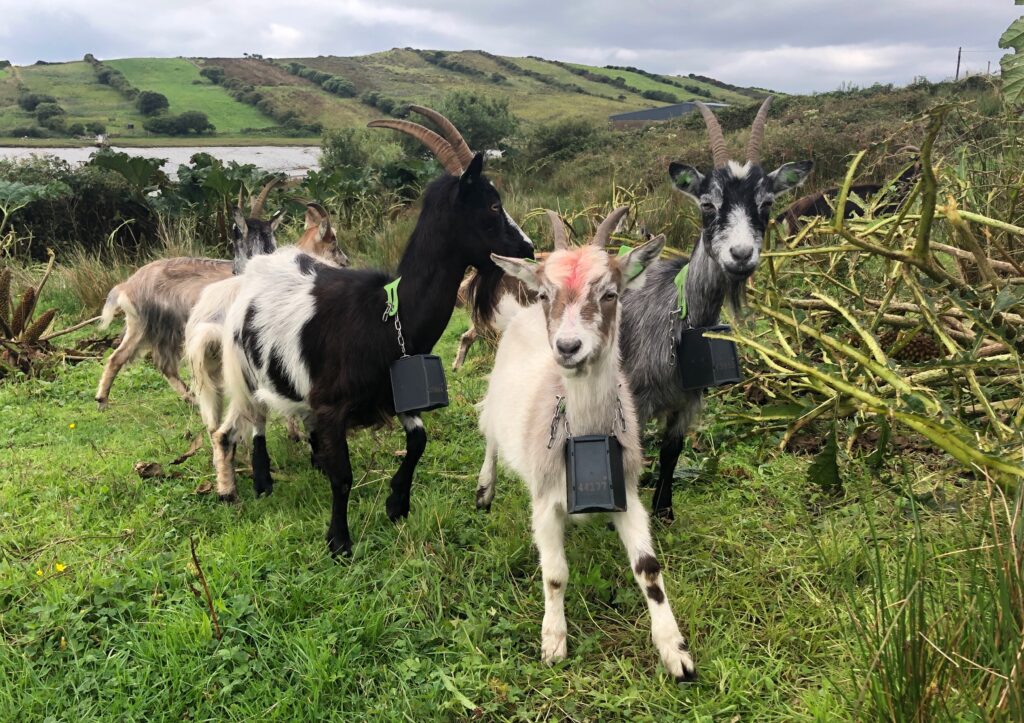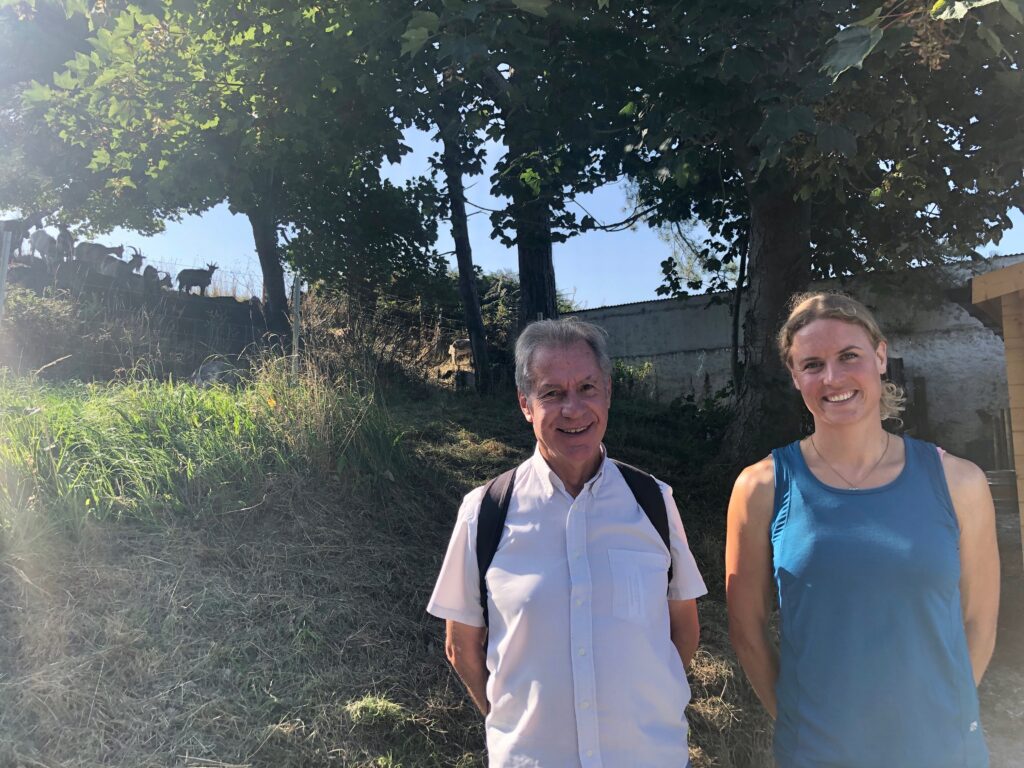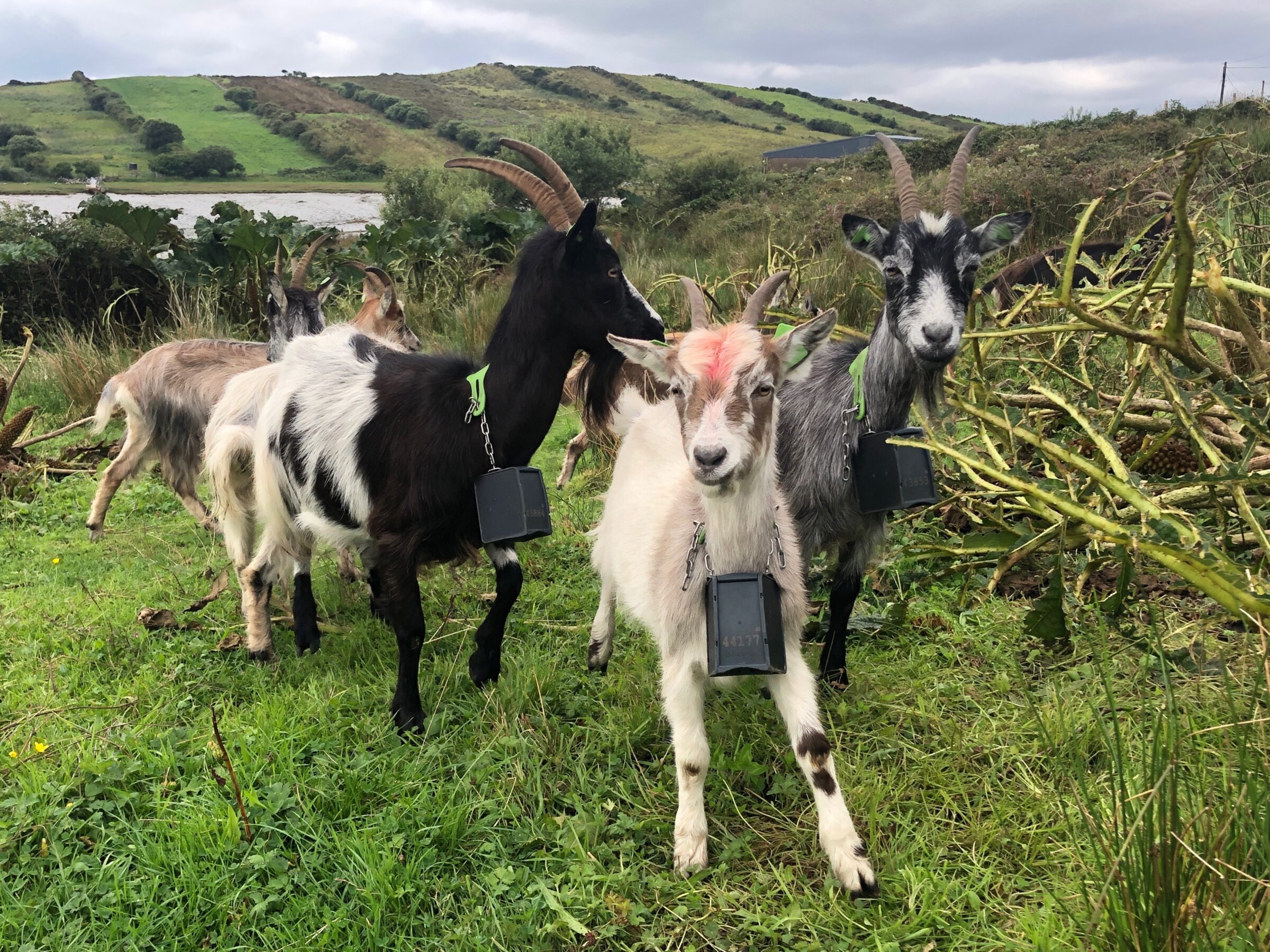Old Irish Goats Return to Howth Head after Century Long Wait
The Old Irish Goat Society has commenced a conservation grazing project, with Old Irish goats, at Howth, in the Dublin Bay UNESCO Biosphere Reserve. The scheme, which will last for 3 years, is a partnership project with Fingal County Council.
A group of 25 Old Irish Goats, originating from the national herd in Mulranny, Co Mayo, have arrived on Howth Head as the first phase of the project gets underway. The project will utilise traditional methods of management with Mellisa Jeuken, the goat herder. It will also trial, for the first time in Ireland, the Norwegian “No-fence” system which employs GPS tracking.

Up until the 1940s, Howth Head was traditionally grazed by livestock and goats in particular. However, with the decline of traditional grazing, wildfires became more frequent, Gorse and Bracken growth expanded and the diversity and quality of the heathland declined.
This critically endangered, native breed of goat makes its return to the heathlands of Howth Head, after a hiatus of nearly a century. These goats will play an important role in managing growth to reduce fire risk to homes, while also enhancing the biodiversity of the priority heathland habitats. The Old Irish goat has the ability to control the accumulation of gorse, especially after fires and due to their grazing behaviour and efficient digestive systems, adapt to feeding on harsher environments with low nutritive quality heathlands. They effectively offer a more economical and sustainable solution to managing the landscape.

